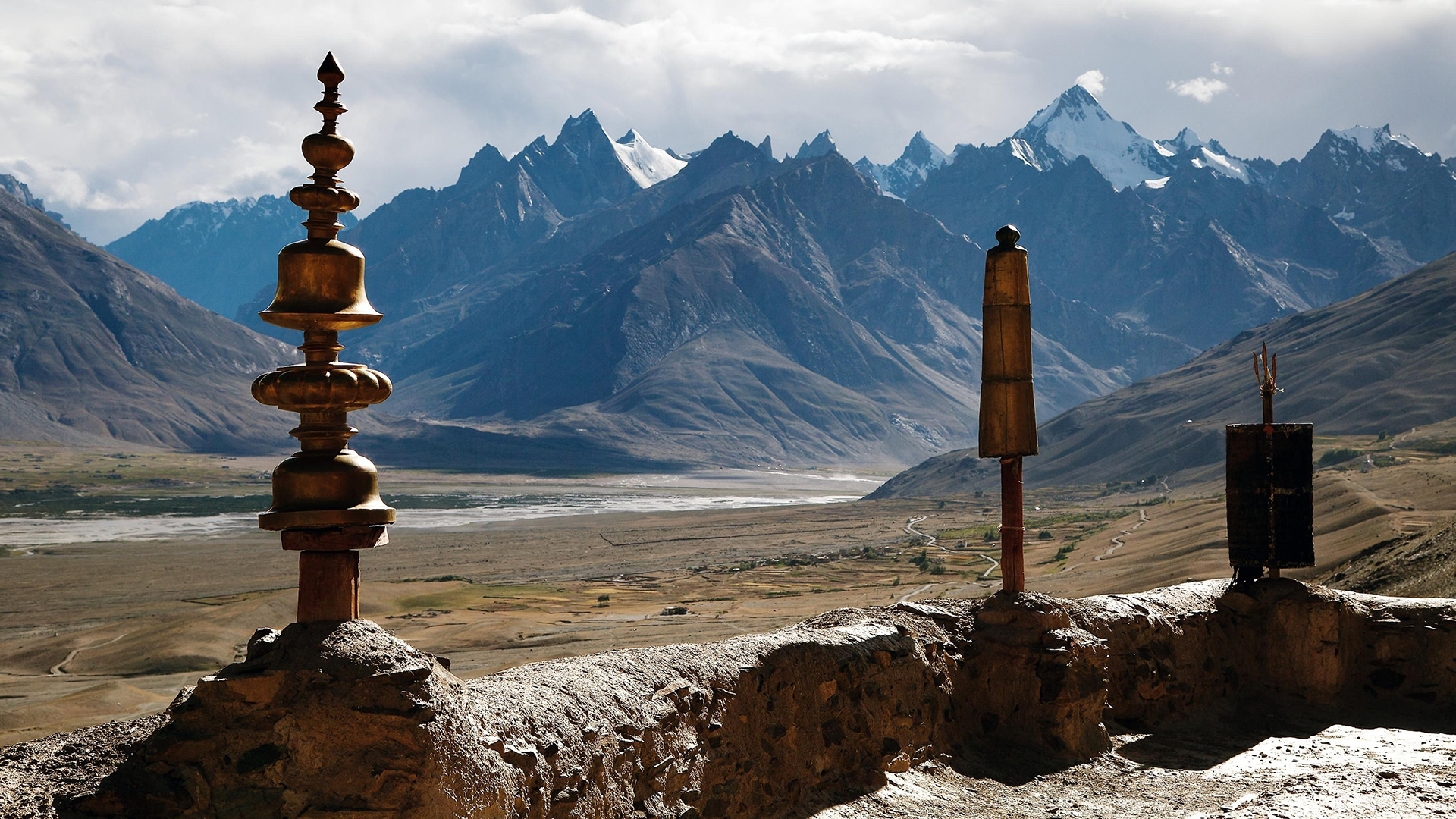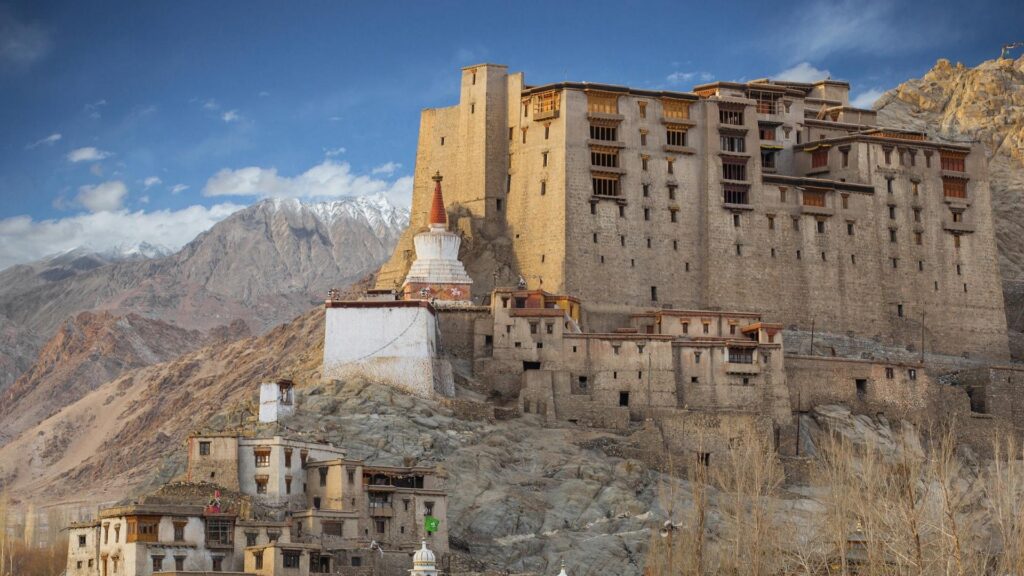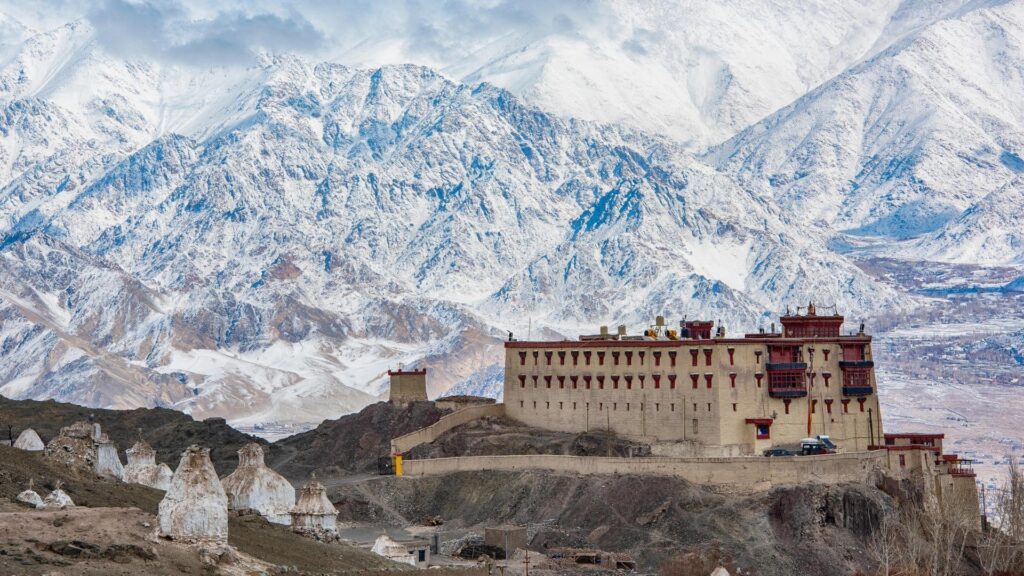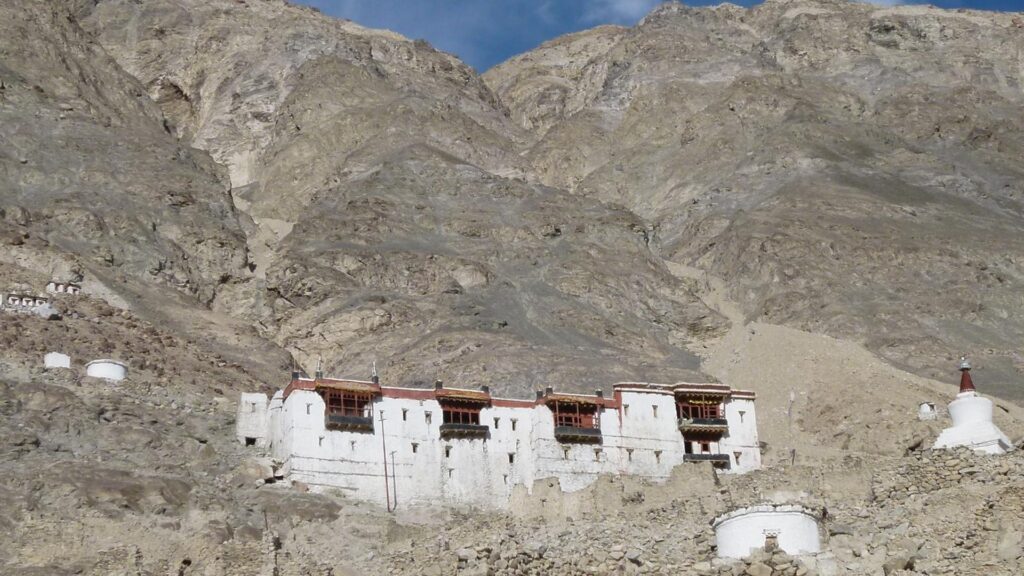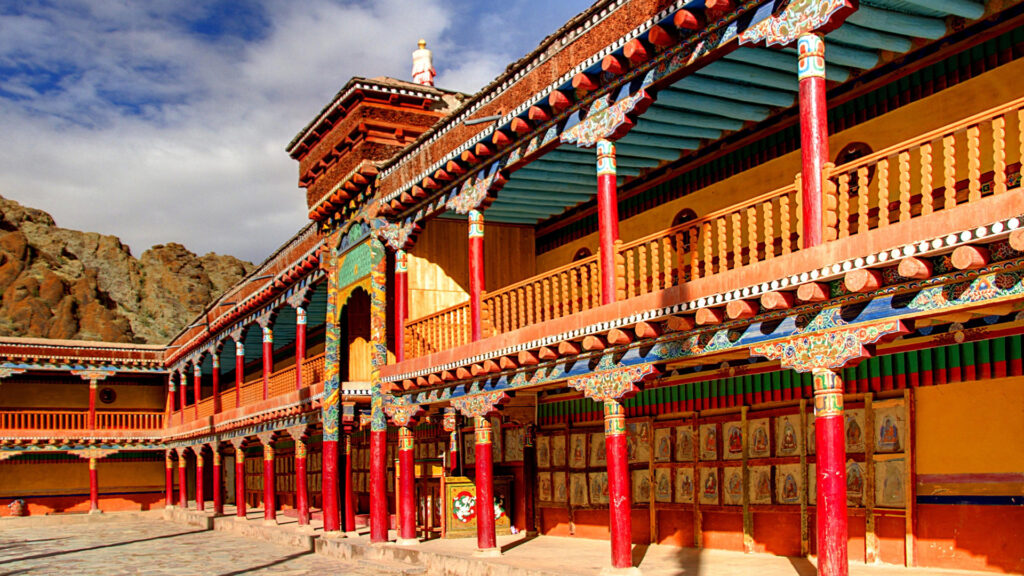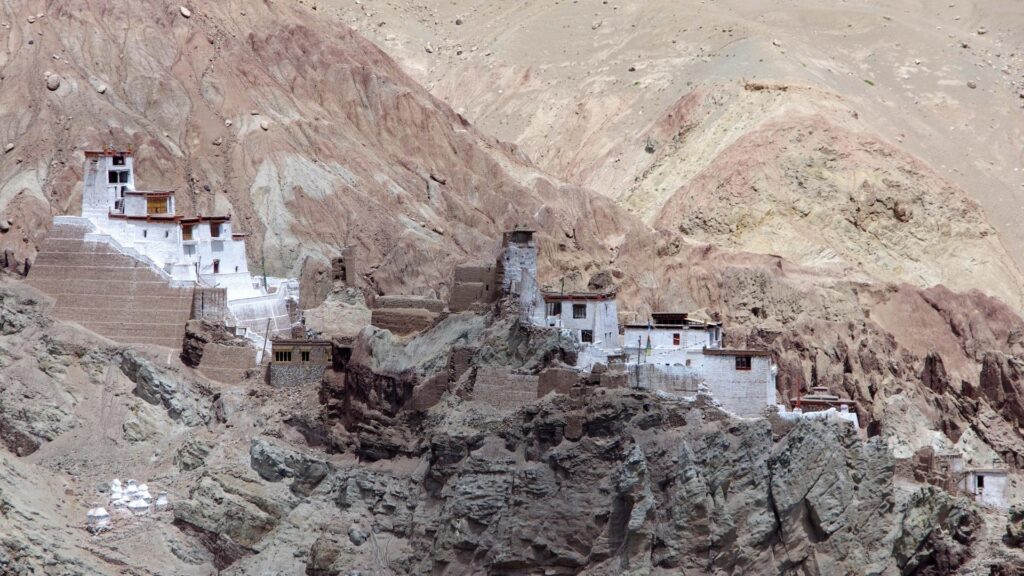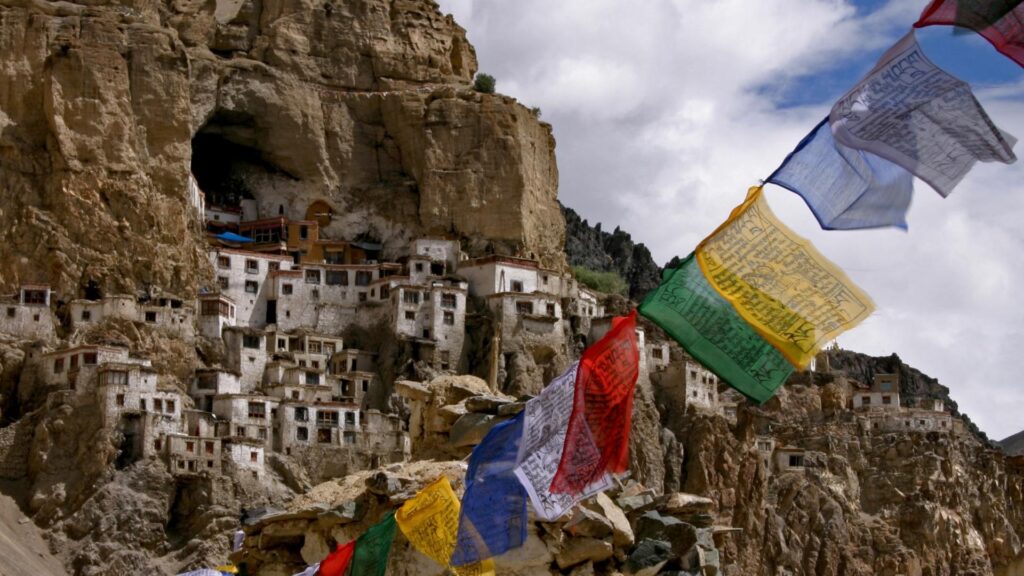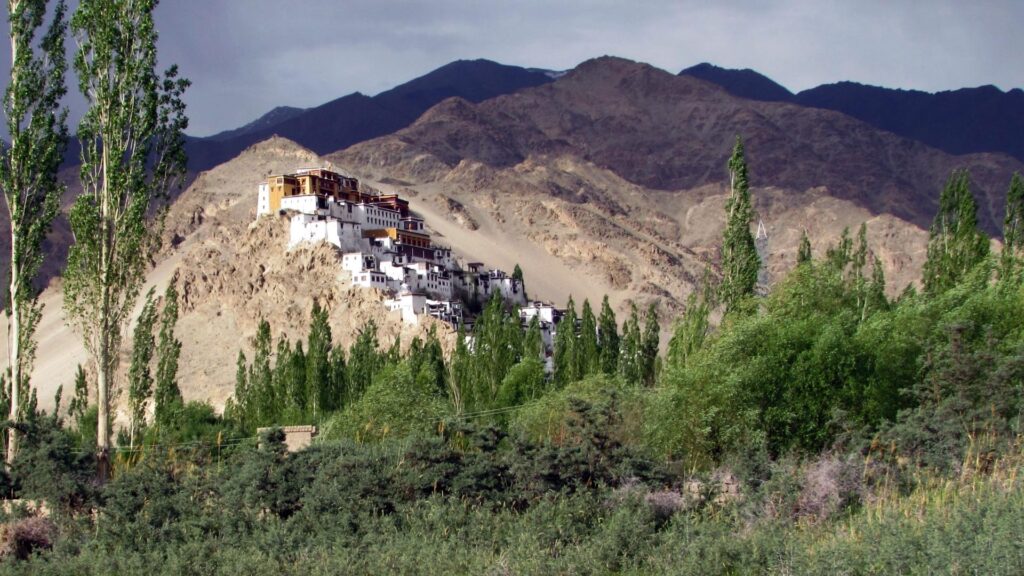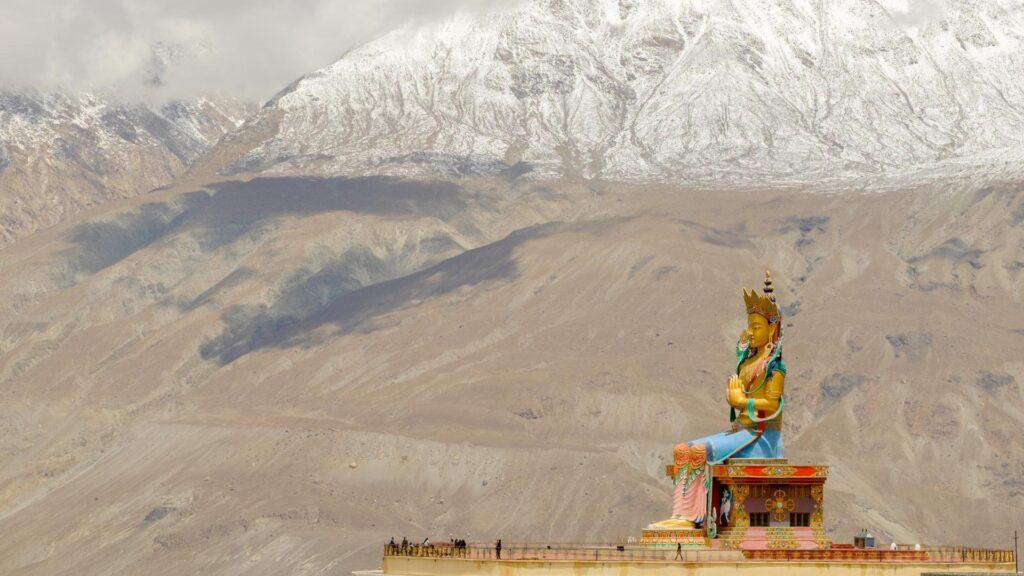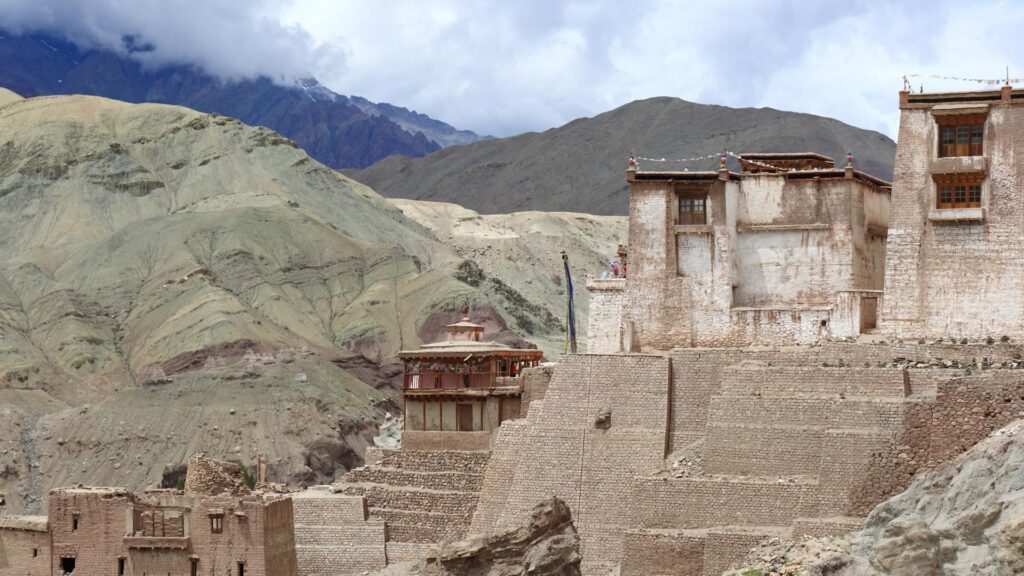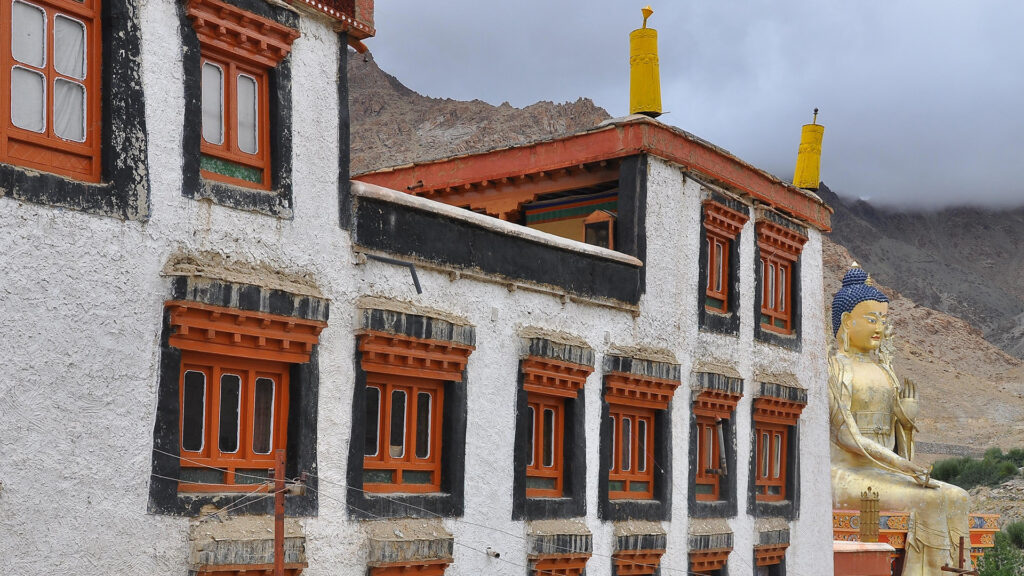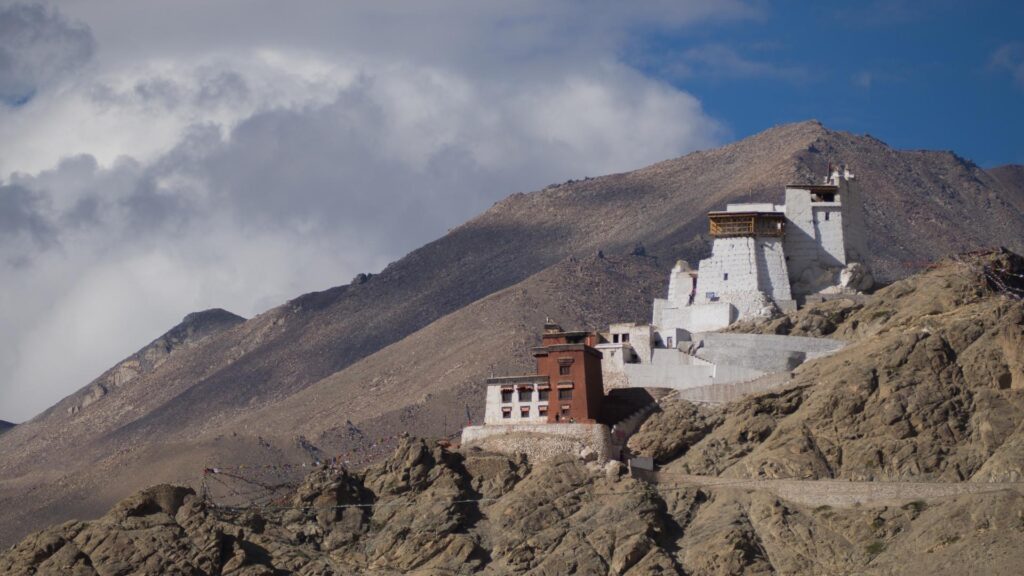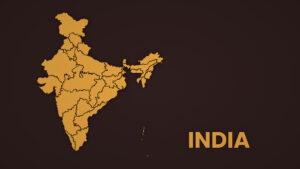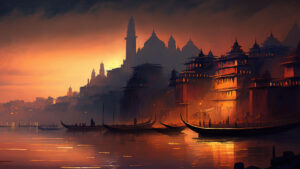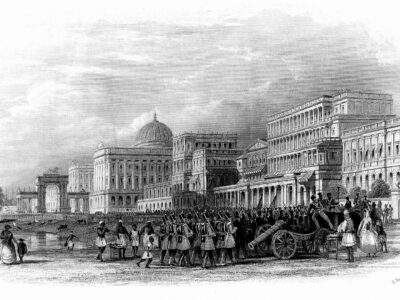Ladakh is one of the alluring destinations that enchant travellers. The high-altitude inhabited region of India is a blend of serene blue lakes, cold deserts, chilling rivers, fortified monasteries, vibrant mountains and unpolluted night skies. Once ruled by Tibetan dynasties, Ladakh slowly attained its glory by operating as a strategic place for the ancient trade routes. Monasteries in this region influenced Tibetan culture stand to speak of interesting facts. The present capital city of Leh also served as the historical capital of the Ladakhi kingdom.
Since the 6th century CE, Buddhism has been a vital force in developing this region’s art, architecture, education, culture and politics, and the foreign influences were negligible. The vast territory of Ladakh was under the secular rule of lamas (aristocratic priests of high rank) till 900 CE. The kingdom of Ladakh was secured and ruled by the kings of the Namgyal dynasty in the early 15th century CE; they built huge fortresses, monasteries and palaces to neutralize the threats from invasions of Muslim rulers.
ARCHITECTURAL FEATURES OF TIBETAN CULTURE
The methods of constructing the Himalayan fortifications, monasteries and palaces seem unusual and remained unchanged till recent times. Esoteric and mystical beliefs of Buddhism dominated pragmatism. Construction, demolition and reconstruction were continuous and supervised by lamas with no established plan or blueprints.
Buddhism repudiates the concept of permanence, and the strong belief in the cycle of birth, death and reincarnation is reflected in Tibetan architecture. The built structures are either square or rectangular with slant walls, constructed with mud bricks and the wooden works used in the construction were fabricated and transported from other regions. They took advantage of hilltops to build fortresses as a defensive measure and closer to the valleys to ensure their economic interests.
Due to the geopolitics and border disputes between India, China and Pakistan, Ladakh remains a sensitive region despite historical threats and invasions.
The following are some of the famous built structures and Himalayan fortifications in the region of Ladakh:
Prominent Palaces of Ladakh
Leh Palace: one of the oldest royal palaces consisting of nine storeys, built by king Sengge Namgyal between 1610 – 1645 CE and later abandoned due to the takeover by Dogra forces in the 19th century. Although this beautiful palace is in a degraded situation, it stands witnessing the glorious past of the Ladakhi kingdom.
Stok Palace: was built after 1800 CE as a monarchial summer palace, at the present dwelling of the royal family forced to move here after taking control of Ladakh by Dogra forces. A part of the functional palace serves as a heritage hotel and a museum. This palace is just 9 miles away from the city of Leh.
Shey Palace: the present palace was built on a hilltop close to the Indus river in the late 17th century. This place once served as the summer capital of Ladakh. This palace is accessible on Leh-Manali road, 9 miles away from the city of Leh.
Zamskhang Palace: a beautiful Tibetan palace in ruins, located in the Nubra valley. The three-floor structure at a high altitude stands from the 17th century. The hidden delight surrounded by stupas in the Nubra valley for travellers provides an insight into the life of the ancient people of Ladakh.
Major Fortress Monasteries of Ladakh
Hemis Gompa: a most famous 17th-century monastery in Ladakh. The premises have a temple dedicated to Padmasambhava (an occult scholar) and a museum exhibiting centuries-old statues of Buddhist gods and goddesses. The monastery is home to numerous Buddhist monks and is surrounded by a stunning view of mountains. The Hemis Gompa is located at a distance of 28 miles away from Leh town.
Alchi Gompa: one of the oldest monasteries in Ladakh that Lochen Rinchen Zangpo founded in the 11th century. The mural paintings and carvings by Kashmiri artists and artisans notably enhance the beauty of this monastery. The peculiar feature of this monastery is that it lies on flat ground rather than on a hillock.
Phuktal Gompa: unique monastery remotely located in the Zanskar, built around a natural cave and is reachable only by foot. One of the oldest and most isolated monasteries sheltered many sages, monks and scholars for several hundred years. Due to the recent heavy snow, some parts of this monastery were damaged.
Thiksey Gompa: located 20 kilometres from Leh, this monastery is a remarkable similitude to Potala Palace of Lhasa, Tibet. One of the largest monasteries was built on a cliff in the 15th century. A twelve-storey complex exhibits Buddhist stupas, thangkas, statues and other religious objects. The temples of Maitreya Buddha and Goddess Tara are important points of interest.
Lamayuru Gompa: nestled on a mountain surpassing the valley, it is one of the Ladakh region’s oldest and most scenic monasteries. Lamayuru is situated on the Leh-Srinagar national highway, 60 miles away from Leh.
Diskit Gompa: established in the 14th century, it is the oldest and largest monastery in the Nubra valley. The splendid monastery, constructed above the plains of the Shyok river, notably has the tall statue of Maitreya Buddha.
Basgo Gompa: the only monastery holding the mural paintings of the 16th century in a declined condition for over 400 years, partially restored to an extent. Basgo served as the lower Ladakh region’s capital in the past, located roughly 25 miles from Leh. The fortress withstood the siege for three years. The highlights of this fortified site are the temples of Chamchung, Chamba Lakhang and Serzang, dedicated to Maitreya Buddha.
Likir Gompa: a monastery defeated by peace situated in the tranquil valley close to the Indus river accessible through Leh-Srinagar national highway just about 32 miles from Leh town. The renovated 11th-century monastery retains the big statues of Sakyamuni, Maitreya and Tsong Khapa and stores the old manuscripts, thangkas, costumes and earthen pots.
Namgyal Tsemo Gompa: a small monastery close to the Tsemo castle, which is at a walkable distance from the Leh palace, stands seeking attention. A 16th-century structure established by king Tashi Namgyal has a high statue of Maitreya and exhibits ancient manuscripts and frescoes.
Karsha Gompa: an important monastery of the 10th century in the Zanskar region, possesses ancient rock carvings and wall paintings. One should have a journey of 160 miles from Kargil to Padum and a few more miles away from there to reach this scenic monastery.
Repair, refurbishing and rebuilding were continuous processes witnessed by most monasteries and palaces. Because of this reason, the process of historical dating based on these built structures is almost impossible. However, the fortified structures of Ladakh never hesitate to illustrate the power, valour, unity, beliefs, values, rich heritage and culture of the Ladakhi people.

